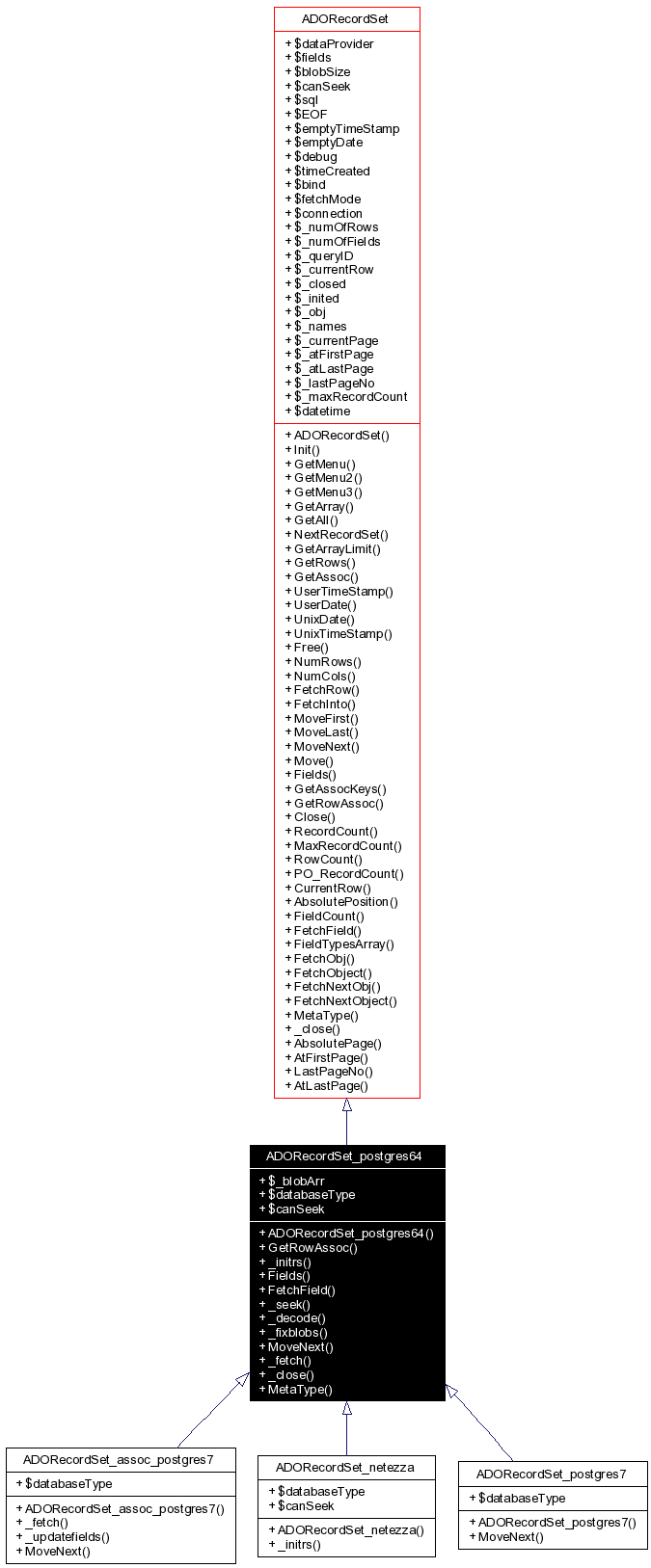
Documentation TYPO3 par Ameos |


Public Member Functions | |
| ADORecordSet_postgres64 ($queryID, $mode=false) | |
| & | GetRowAssoc ($upper=true) |
| _initrs () | |
| Fields ($colname) | |
| & | FetchField ($off=0) |
| _seek ($row) | |
| _decode ($blob) | |
| _fixblobs () | |
| MoveNext () | |
| _fetch () | |
| _close () | |
| MetaType ($t, $len=-1, $fieldobj=false) | |
Public Attributes | |
| $_blobArr | |
| $databaseType = "postgres64" | |
| $canSeek = true | |
| in other words, we use a text area for editing. | |
Definition at line 853 of file adodb-postgres64.inc.php.
|
|
Get the ADOFieldObject of a specific column.
Reimplemented from ADORecordSet. Definition at line 915 of file adodb-postgres64.inc.php. |
|
|
Get the value of a field in the current row by column name. Will not work if ADODB_FETCH_MODE is set to ADODB_FETCH_NUM.
Reimplemented from ADORecordSet. Definition at line 901 of file adodb-postgres64.inc.php. |
|
|
Use associative array to get fields array for databases that do not support associative arrays. Submitted by Paolo S. Asioli paolo.asioli::libero.it If you don't want uppercase cols, set $ADODB_FETCH_MODE = ADODB_FETCH_ASSOC before you execute your SQL statement, and access $rs->fields['col'] directly. $upper 0 = lowercase, 1 = uppercase, 2 = whatever is returned by FetchField Reimplemented from ADORecordSet. Definition at line 876 of file adodb-postgres64.inc.php. References ADORecordSet::GetRowAssoc(). |
|
||||||||||||||||
|
Get the metatype of the column. This is used for formatting. This is because many databases use different names for the same type, so we transform the original type to our standardised version which uses 1 character codes:
Reimplemented from ADORecordSet. Definition at line 987 of file adodb-postgres64.inc.php. |
|
|
Move to next record in the recordset.
Reimplemented from ADORecordSet. Reimplemented in ADORecordSet_postgres7, and ADORecordSet_assoc_postgres7. Definition at line 952 of file adodb-postgres64.inc.php. |
|
|
in other words, we use a text area for editing. any varchar/char field this size or greater is treated as a blob Reimplemented from ADORecordSet. Reimplemented in ADORecordSet_netezza. Definition at line 856 of file adodb-postgres64.inc.php. |
 1.4.6
1.4.6